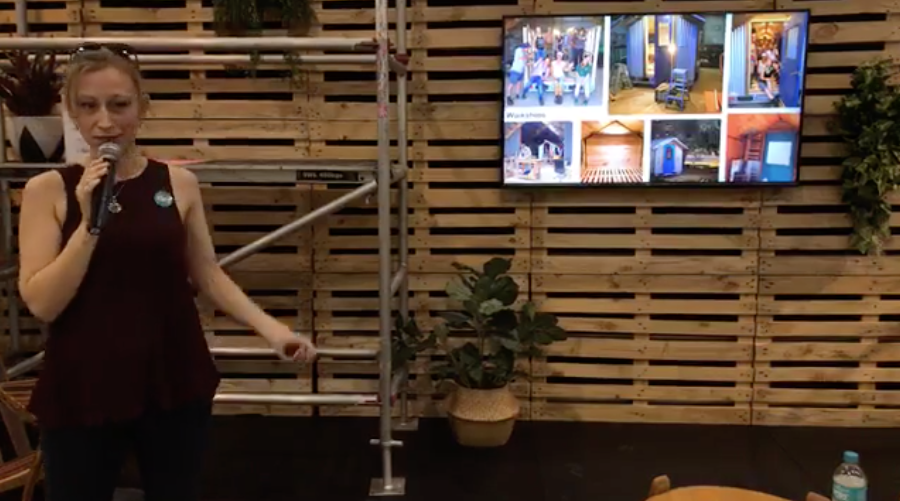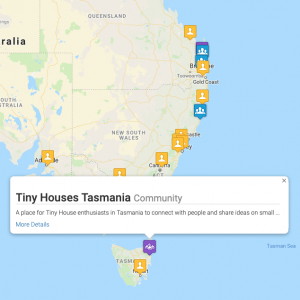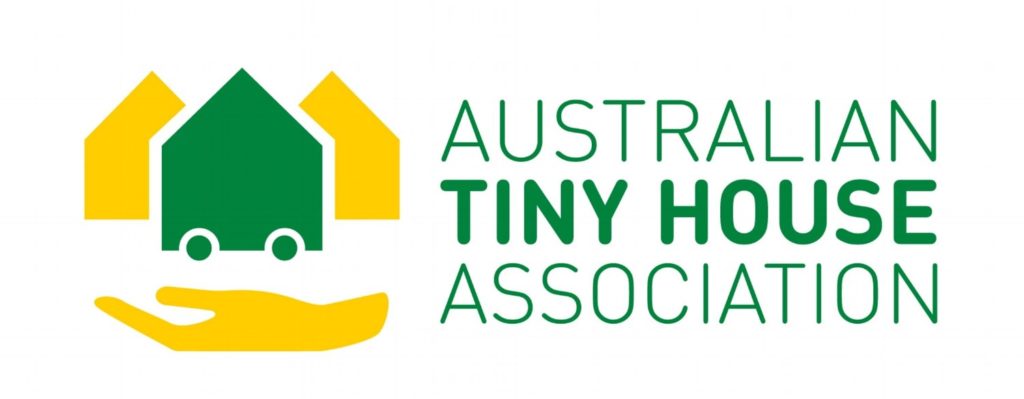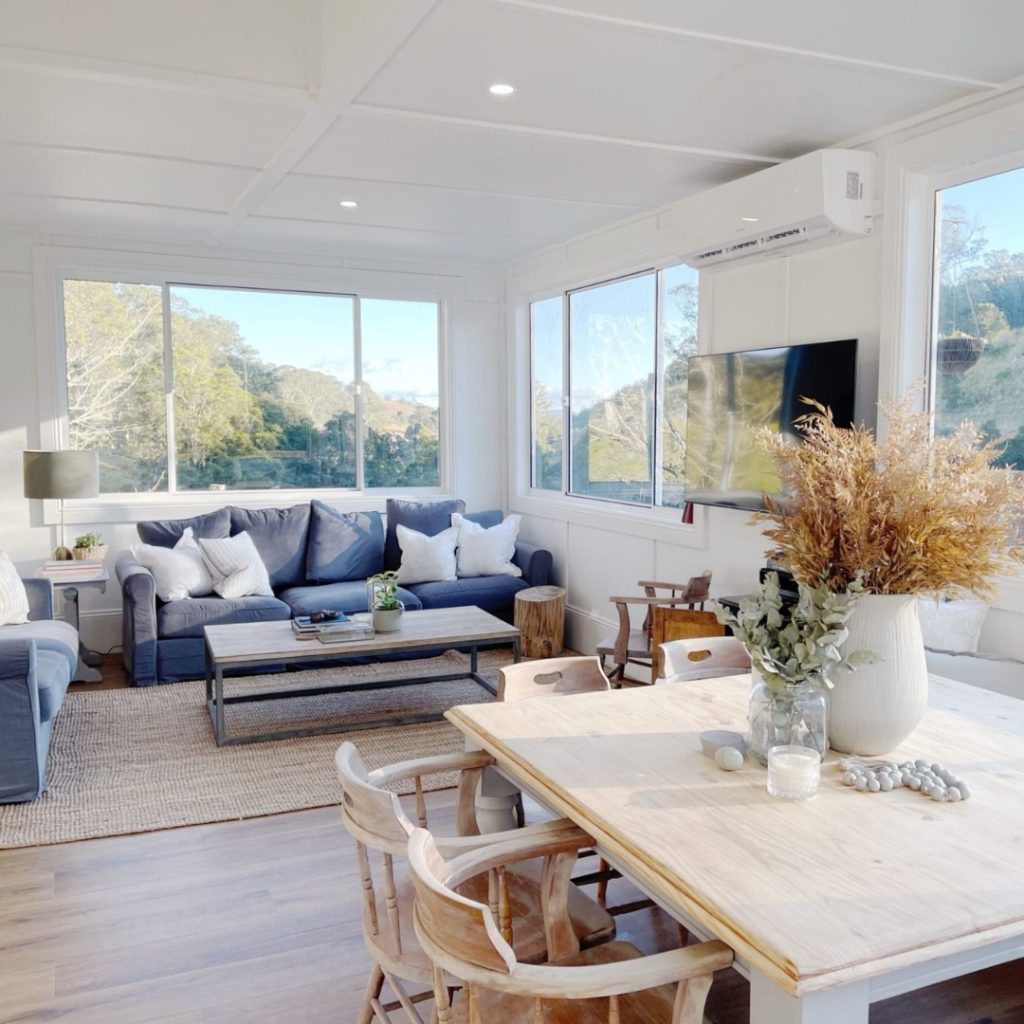The Great Australian Dream is rooted in the tiny house revolution, which proclaims that we have the right to ‘life, liberty and the pursuit to live comfortably.’
Elle Paton is something of a tiny house enthusiast, to put it lightly. In just a few short years, she’s founded the Australian Tiny House Directory, Tiny Non-Profit and a vibrant Facebook community. Speaking at the Home Show, Elle presented ‘Evolution of the Great Australian Dream: Tiny Homes.’ She stressed that while tiny homes are not new, they are something worth rediscovering.

Elle explains her moment of inspiration, “I started thinking about my ideal small home and I came across tiny houses. They were gorgeous; I was fascinated. But I wondered if I could fit my quality of life into a tiny house. I had my doubts until I saw this tiny house.”
She’s referring to the ‘Alpha’ by New Frontier Homes in the US. In true American style, it may be the biggest tiny house on the market. It boasts a full-size kitchen with all the finishes including an integrated washing machine, marble worktops and a foldable spice rack. It even has an eight-person table which folds out, perfect for entertaining guests. If nothing else, it exists to prove the nay-sayers wrong, you can live a normal lifestyle on wheels.
Elle reflects on the design, “I wasn’t sold on the concept of tiny homes until I learned I could have my friends over for dinner and a bottle of wine!”
…………
A Unique Calling
Everyone is different. Therefore, people have very unique reasons to switch to little homes. For some, it’s freedom from the ‘matrix’, where you can work to live, not live to work. Others just want the simple life, living closer to nature with only the bare necessities. Perhaps the guilt of global warming pushes some to a zero-carbon lifestyle. Artists use them to pursue painting, writing or music full-time. Finally, those romantically inclined just want uninterrupted quality time with their partner as they drink wine and doze under the stars…
What would your life be like if there was…
| ? Less debt | ⏳ More time |
| ? Less clutter | ? More savings |
| ? Less financial obligations | ? More experiences |
| ? Less cleaning | ? More connection with loved ones |
| ?♀️ No competition with the joneses | ? More passion |
| ?♀️ More relaxation | |
| ? More clarity |
For Elle, it was the momentum of the tiny home revolution that swept her up. Throwing herself into the movement has changed her life completely, occupying her with endless projects geared towards social change. Her knowledge surrounding laws, social housing, tourism, market trends, government and construction runs deep.
So how did she get started? Her fascination began with a dream to transform a shipping container 15 years ago. But things got off to a rocky start… She didn’t like
how boxy her new container home felt. She endlessly morphed it, bent it and
squeezed it like play dough into submission. Her prolonged project didn’t  faze
faze
her. Instead, her passion led to a mini crash course.
She told her story, “I spent five days living in a tiny house and mucking around with a fantastic group of people. I discovered a newfound love for power tools and a desire to pursue my dream.”
Following this, she began ‘tiny touring’ around the US and Australia, looking to expand her knowledge. She returned eager to start her second personal pilot study. She aimed to use 75% recycled materials but missed her target closely at 63%. Structural integrity was a higher priority and could only be achieved through new materials. With a little help from her friends and a donated trailer, she managed to finish the project within spec for just $5,500 – a true testament to affordable living.
Little Case Studies
During her travels, Elle discovered many practical purposes for small spaces. She launched her non-profit after seeing the failings of social housing first hand. 30,000 working Australians are homeless, disrupting the stigma that homeless people are all ‘lazy’. Supporting a large family with one job is difficult with rental and energy prices spiralling out of control.
The costs – 1 x homeless person
| $60,000 | last resort housing bed |
| $85,000 | accommodate homeless person |
| $50,000 | tiny house |
Elderly
For the elderly, special design and price considerations need to be made. Now, we can build small homes with wheelchair access, elevated beds and outdoor decking, perfect for multigenerational living.
Carers
Aside from accommodation, many elderly need carers to keep close-watch, while maintaining their independence.
Farmers
Farmers need multiple houses for seasonal workers that withstand the test of time.
Students
Perhaps the most in need of low-cost accommodation options are struggling students.
Tourism
Let’s not forget tiny tourism, indisputably the most profitable industry fuelling the movement. Airbnb, tiny hotels, eco and agro-tourism and the aforementioned tiny touring; the opportunity is fertile.
Community
Finally, we have the rise of intentional communities who increasingly adopt tiny homes. What is an intentional community? They’re planned residential communities designed to have a high degree of social cohesion and teamwork.

Relatable examples include housing co-ops, eco-villages and co-housing. Elle is currently volunteering her time to develop a tiny house and community garden project in St Kilda. The project gathered land, funding and council support to exemplify how planting tiny homes can grow local communities.
The Law
Something as modern as the tiny house revolution shows the cracks of our archaic politics. Politics is slow-moving. Which is a problem for a fast-moving culture. This is why people opt to have homes on wheels, as they are categorised legally as a caravan and are subject to less scrutiny than homes built on a foundation. The best advice is to open a dialogue with your local council and ask about local planning schemes and zoning laws.

Thanks to pioneers like Ella, Stone Age politicians are getting a boot up the backside towards reform. The Tiny House Association have been lobbying government, evening setting up a Municipal Association of Victoria working group. Events like Melbourne Knowledge Week and the Home Show have been ideal platforms to spread awareness. Most recently, two homes were built through a US certification process, proving to be a great model for safety but lacked some features exclusive to the Australian market.



